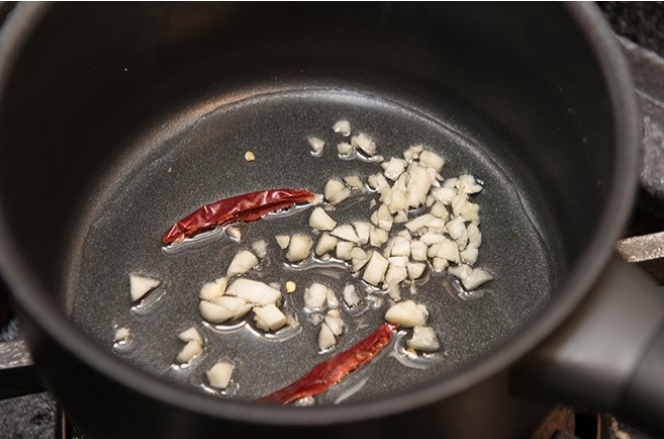From Japan —-Tomato Rasam : Expand your culinary horizon with a unique dish from India
By MIKA OMURA

Editor’s note: In the Taste of Life series, cooking experts, chefs and others involved in the field of food introduce their special recipes intertwined with their paths in life.
* * *
Shunsuke Inada joined a major beverage manufacturer after graduating from a university.
As he made the rounds at restaurants while on business, he got the urge to cook and entertain people, and so decided to leave his company at age 27.

Shunsuke Inada
Around that time, a friend who was planning to open an “izakaya” Japanese-style pub in Gifu Prefecture contacted Inada, and he decided to lend a hand.
They were aiming to create an establishment that they would frequent themselves if they were customers. Their menu included Japanese food, Italian, French and other types of cuisines.
They also served authentic dishes for each cuisine rather than a watered-down version to please certain customers.
“Many people in the same profession such as chefs and cooks of Japanese cuisine came and enjoyed our dishes. We wanted to impress them. They often told us, ‘I could never serve such authentic dishes for fear of how our guests could react,’” said Inada.
As the restaurant group grew and Inada felt he had a fair understanding of various cuisines, he came across Indian cuisine.
“It was a totally different world,” he said. “In particular, all the flavors offered by South Indian dishes were unfamiliar and perplexing.”
Until then, he had thought that every cuisine had its umami and richness that serve as its base, be it dashi stock for Japanese dishes or the fermented seasonings and sweetness of Thai cuisine. But South Indian cuisine seemed to require none of it.
For instance, cabbage would be seasoned only with salt in some cases.
The secret lay in how South Indian cuisine combines dishes.
For example, curry and other dishes are placed side by side and enjoyed by being poured on rice.
“If one of the dishes, say, the curry offered concentrated umami and richness, there is no need to put umami and richness in all the dishes,” said Inada. “The structure of the meals blew me away.”
Rasam is a spicy soup that is eaten daily in South India and can be part of any meal. The base is the cooking liquid of beans and tamarind, and it is characterized by a spicy and tart flavor. Some Japanese might find the flavors puzzling, however, thinking that it seems to be lacking something.
While respecting the original version of rasam, Inada used a tomato to add a natural flavor to the tartness.
“I think the taste will not strike the locals as odd,” said Inada.
The soup can also be enjoyed by liberally pouring it over rice.
Shunsuke Inada is a chef and restaurant producer born in Kagoshima Prefecture in 1970. He has published books including “Minimaru ryori” (Minimal cooking) from Shibata Shoten and “Oishiimono de dekiteiru” (Made up of tasty food) from Little More.
BASIC COOKING METHOD
Main Ingredients (Serves 2)
80 grams (1/2) tomato, 8 grams (2 cloves) garlic, 4 grams (1 Tbsp) coriander, 15 grams (about 1 Tbsp) oil, 2 pods chili pepper, 100 ml water, 200 ml tomato juice, 4 grams (2 tsp) black pepper (powder), if available 1 gram (1/2 tsp) cumin powder, 5 grams (1 tsp) salt
1. Dice tomato. Finely chop garlic and coriander.
2. Add oil, chili pepper and garlic to frying pan and place on low heat.

Add oil, garlic and chili pepper to frying pan and cook slowly on low heat.
3. When garlic colors a little and a rich aroma rises, add water.
4. Add tomato juice, black pepper, cumin powder and salt and cook on medium heat.

Add black pepper and other spices to the soup.
5. When water comes to a boil, add tomato and coriander. When it comes to a boil again, turn off stove and serve.
About 110 kcal and 2.5 grams salt per portion
(Nutrient calculation by the Nutrition Clinic of Kagawa Nutrition University)




